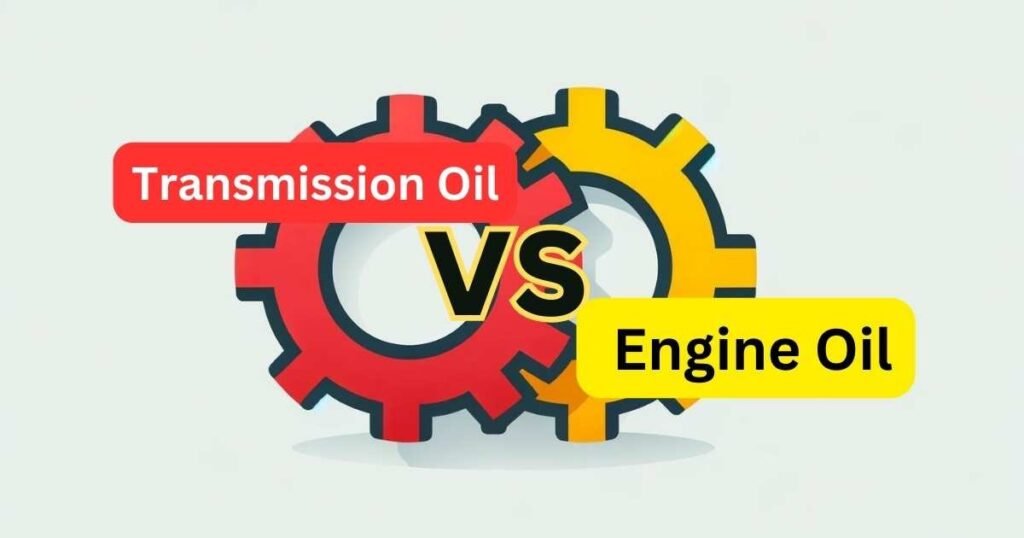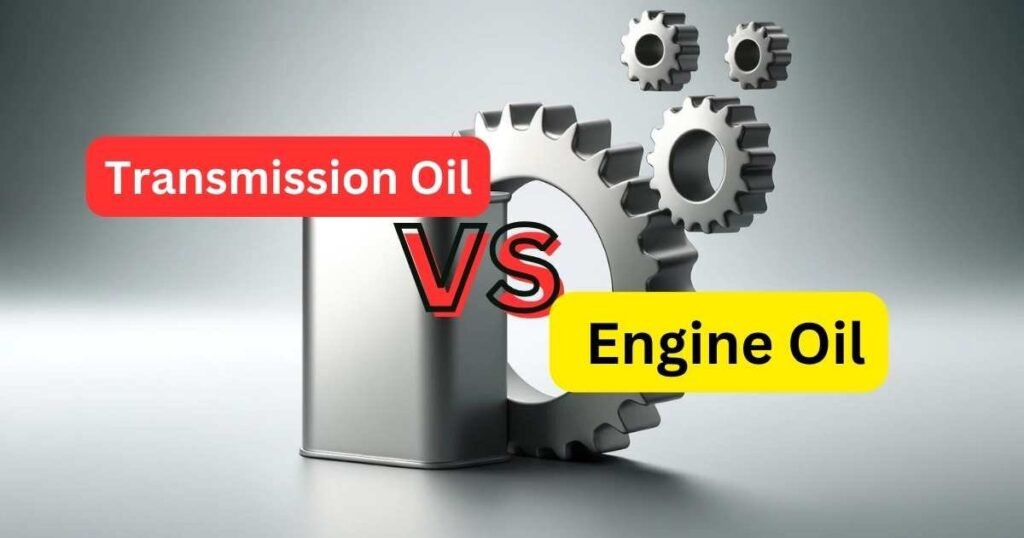I’ve spent years writing about how cars work, and I often get asked about the difference between transmission oil and engine oil. Although both oils look similar in their amber color and help keep your car running, they are quite different.
Let’s explore these oils and see what makes each one special for your car’s transmission and engine.
Summary:
Transmission oil, or ATF, lubricates transmission components, facilitates smooth gear shifts, and helps cool the system. Engine oil minimizes engine wear, aids in cooling, and keeps the engine clean. Each oil type has specific formulations and viscosity ratings essential for optimal performance and vehicle longevity. Regularly changing oils according to the manufacturer’s recommendations prevents costly repairs and ensures efficient vehicle functioning.
Table of Contents
Transmission Oil or Transmission Fluid
What is transmission oil and what is its main function?
Transmission oil, also known as Automatic Transmission Fluid (ATF), is essential for your car’s transmission. It serves three important roles.
As a lubricant, it reduces friction between the moving parts inside the transmission like gears and clutches. This helps prevent wear and tear and ensures smooth gear changes.
ATF also works as a hydraulic fluid. It helps transmit power from the engine to the transmission, allowing seamless gear shifts.
Additionally, ATF helps cool the transmission. It absorbs and transfers heat, keeping the transmission at the right temperature for safe operation.
What are the different types of transmission oil/fluid available?
There are mainly three types of automatic transmission fluids (ATF) that you might encounter.
Dexron/Mercon ATF is commonly used and was specifically designed for General Motors (Dexron) and Ford (Mercon) vehicles.
Universal Transmission Fluids (UTFs) are versatile and can be used in many different types of transmissions from various car makers.
Continuously Variable Transmission Fluid (CVT Fluid) is made for CVT transmissions. These transmissions provide a unique driving experience compared to traditional automatics.
| Type | Description |
| Dexron | General-purpose ATF for most passenger vehicles |
| Mercon | High-performance ATF for heavy-duty and high-stress applications |
| ATF+4 | Advanced ATF for newer vehicles with advanced transmissions |
| CVT Fluid | Specialized fluid for Continuously Variable Transmissions (CVTs) |
What are the key properties and characteristics of transmission oil?
Transmission oil is generally thinner than engine oil. This makes it flow more easily when it’s cold, which helps your car shift gears smoothly right after starting.
It contains friction modifiers too. These additives stop the clutches from engaging too harshly, ensuring the gears change smoothly without any shudder.
Anti-foaming agents are also important in the transmission oil. They keep it free from air bubbles so the hydraulic system works right.
Lastly, detergents and dispersants in the oil keep the transmission clean by stopping dirt and sludge from building up.
How often should transmission oil be changed for optimal performance?
Transmission oil lasts longer than engine oil, but it does degrade over time. Always check your car’s owner’s manual to know exactly when to change it. Generally, you should change your transmission fluid every 30,000 to 100,000 miles. This can vary based on how you drive and the type of vehicle you have.

Engine Oil or Motor Oil
What is engine oil and what is its primary purpose?
Engine oil is crucial for your car’s engine, and performs several key functions. It lubricates the engine, reducing friction between all the moving parts. This helps minimize wear and tear.
The oil also helps cool the engine. It absorbs heat created during combustion and moves it to the engine block and oil pan to cool off.
Besides cooling, engine oil cleans the engine too. It catches dirt and other contaminants, keeping them from building up on the engine parts.
Lastly, engine oil aids in sealing. It helps create a tight seal between the piston rings and cylinder walls, which improves engine performance by ensuring optimal compression.
What are the various types of engine oil available for different vehicles?
Engine oil comes in different grades based on viscosity, which shows how easily it flows. Some common grades are 0W-20, 5W-30, and 10W-40. The “W” means winter, and a lower number before the “W” means the oil flows better when it’s cold. The number after the “W” tells you how the oil behaves at the engine’s operating temperatures.
You can choose between synthetic and conventional engine oils. Synthetic oils work better and offer more protection in very hot or cold temperatures than conventional oils do.
| Type | Description |
| Conventional | General-purpose oil for most passenger vehicles |
| Synthetic | High-performance oil for extreme temperatures and conditions |
| Full Synthetic | Advanced oil for high-performance and luxury vehicles |
| Diesel Oil | Specialized oil for diesel engines |
Make sure to check your car’s owner’s manual. It will tell you the exact type and grade of engine oil your vehicle needs.
What are the key properties and characteristics of engine oil?
Viscosity is a key feature of engine oil. The right viscosity grade makes sure the oil flows well through the engine at different temperatures.
Engine oil also has anti-wear additives. These create a tiny protective film on engine parts to reduce wear and tear.
Detergents and dispersants in the oil help keep the engine clean. They prevent dirt and sludge from building up inside.
Finally, viscosity improvers are added to help the oil keep its thickness across various temperatures. This ensures your engine runs smoothly in both hot and cold conditions.
How often should engine oil be changed to maintain engine health?
Engine oil change intervals vary depending on your car’s make, and model, the type of oil used, and how you drive. It used to be common to change oil every 3,000 miles. But now, thanks to better oil technology, many new cars that use synthetic oil can go 5,000 to 10,000 miles between changes. Always check your owner’s manual to find out the recommended oil change schedule for your specific vehicle.
| Feature | Engine Oil | Transmission Fluid (ATF) |
| Primary Function | Lubrication, cooling, cleaning, corrosion protection | Hydraulic pressure transmission, lubrication, heat transfer |
| Viscosity | Varies depending on weather and engine needs | Generally lower viscosity than engine oil |
| Change Intervals | Every 3,000-5,000 or 10,000 (for synthetic oil) miles typically | Every 50,000-100,000 miles typically |
| System | Open system (contaminants from combustion) | Closed system |
Key Differences Between Transmission Oil Vs Engine Oil
What is the difference in viscosity and thickness between transmission and engine oil?
Transmission oil is generally thicker than engine oil. This thickness helps it keep its lubricating properties under the high pressure found in transmissions. On the other hand, engine oil needs to be thinner so it can flow easily through the engine, providing the best lubrication at different temperatures.
How do the additives and chemicals in transmission and engine oil differ?
While both oils have additives for specific purposes, they differ a lot. Engine oil includes anti-wear additives to protect against friction and metal touching metal. It also has detergents and dispersants to keep dirt and other bad stuff mixed in the oil, so they don’t hurt the engine.
Transmission oil, though, has friction modifiers to help gears change smoothly and anti-foaming agents. These agents stop air bubbles that could mess up the hydraulic pressure in the transmission.
What is the difference in the recommended temperature range for transmission and engine oil?
Both engine and transmission oils need to work well across different temperatures. Engine oil goes through more extreme conditions. It has to handle the very high heat from combustion, which can reach hundreds of degrees Fahrenheit. It also needs to stay fluid during cold starts, which could be below freezing.
Transmission oil, while it does work under pressure, usually faces a less severe range of temperatures inside the transmission housing. It’s designed to handle temperatures typically between 150°F to 350°F, which is 65°C to 175°C.

Can You Use Them Interchangeably? Why Not?
There might be times when it seems okay to use transmission fluid and motor oil interchangeably, especially in older vehicles with manual transmissions that might allow motor oil as a temporary fix. However, using the wrong type of fluid in modern vehicles is not recommended. Each fluid is carefully made to meet the specific needs of its system.
If you use motor oil in an automatic transmission that requires specific ATF, it can cause a lot of problems. This includes excessive wear, and gear slippage, and could even lead to transmission failure. Similarly, using transmission fluid instead of motor oil can result in inadequate lubrication for the engine, causing it to wear out faster and potentially leading to serious engine damage.
How do the change intervals and maintenance schedules for transmission and engine oil differ?
Engine oil changes happen more often than transmission fluid changes. Engine oil needs replacing regularly to clear out contaminants and add fresh additives. Transmission fluid lasts longer because it works in a more closed system and breaks down slower. But remember, it’s very important to check your owner’s manual for the specific guidelines on when to change both engine oil and transmission fluid.
What are the Consequences of Using the Wrong Oil?
What damage can occur if the wrong oil is used in the transmission or engine?
Using the wrong oil in your car can lead to serious problems for both the transmission and engine. Here’s what might happen:
Increased wear and tear can occur if the oil’s viscosity isn’t right, causing more friction between parts. This speeds up the deterioration of those parts. If the transmission oil doesn’t have the correct friction modifiers, it might cause slipping, which leads to slow acceleration and jerky gear changes.
Also, if the oil can’t handle high temperatures well, it might cause overheating. This can harm both the transmission and engine parts. In severe cases, using the wrong oil can even cause complete transmission or engine failure. This could mean very expensive repairs or needing a whole new part.
How can using the wrong oil affect vehicle performance and efficiency?
Using the wrong oil can affect how your car runs and how much gas it uses. If the oil is too thick or too thin, it can cause too much friction. This means your car might not speed up quickly and could use more fuel than it should.
Also, if the transmission oil isn’t right, your car might not shift gears smoothly and could lose some power. This can make your drive less smooth and your car less efficient.
Can using the wrong oil cause complete failure of the transmission or engine?
Yes, using the wrong oil can cause big problems for your car. If the oil isn’t right, it might lead to serious damage like transmission or engine failure. Fixing this can be very expensive. Sometimes, you might even need to replace the whole engine or transmission.
How costly are repairs or replacement if the wrong oil is used?
The cost of fixing your car after using the wrong oil can be high, depending on how bad the damage is. Fixing or replacing the transmission can cost thousands of dollars. If the engine needs to be replaced, it can cost even more.
Recognizing the Differences: It’s Not Just About Color
Traditionally, engine oil and transmission fluid were easy to tell apart: engine oil was black, and automatic transmission fluid (ATF) was red. But now, due to advances in lubricant technology, this isn’t a reliable way to identify them anymore. Modern engine oils and ATFs can be of various colors, which makes it hard to know which is which just by looking.
The viscosity rating, which follows the SAE (Society of Automotive Engineers) classification, can also be confusing when comparing engine oil to transmission fluid. It’s always best to check the specific labels and follow the recommendations from your car’s manual or talk to a qualified mechanic.
Final Thoughts
Using the right oil is crucial not only for your car’s performance and fuel efficiency but also for protecting its important parts. By knowing the differences between transmission and engine oil and sticking to the manufacturer’s advice, you can keep your car working smoothly. This helps avoid expensive repairs and ensures your car runs well for many miles. Remember, understanding a bit about oil can help keep your car in great shape.


